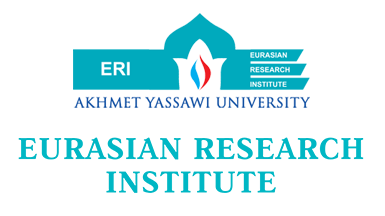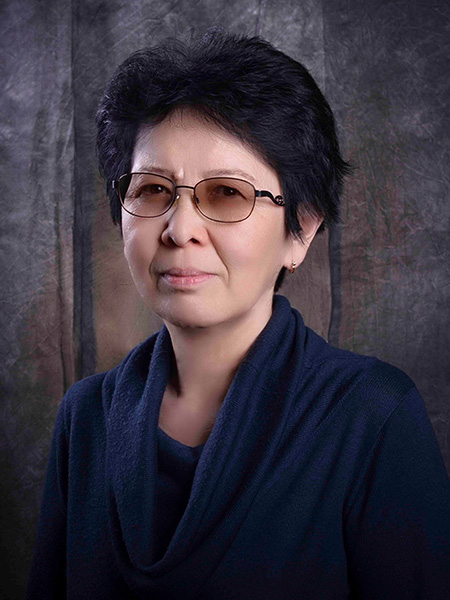Hidden Pitfalls in Academic Publishing

The two main trends dominate today in the academic publishing world – the abandonment of the paper format of scientific journals in favor of electronic versions and the abandonment of paid subscription periodicals in favor of open access journals.
In January 2019, one of the most prestigious international journals “Proceedings of the National Academy of Sciences of the United States of America” (PNAS) announced the termination of its existence in the print form and the transition to the electronic format [Pells, 2019a]. The editorial board explains this step by the fact that sales of printed academic publications have sharply declined in the context of the rapid development of digital technologies, and the limitation of circulation leads to their appreciation. Considering that the number of articles published annually in this journal exceeds three thousand, a reduction in printing costs will obviously lead to a more flexible publishing policy in terms of the size of articles that were previously strictly limited and, as the academic community hopes, a reduction in the cost of their publication for authors.
The financial aspects of publishing high-ranking journals are extremely sensitive not only for authors but also for university libraries around the world. Thus, according to the latest data, a subscription to academic journals costs the leading universities in the UK an average of almost £4 million per year, and in other countries of the world, from $350,000 to $ 9 million, depending on the institution. It turns out that most of these costs are usually allocated to five major academic publishers – Reed-Elsevier, Springer, Wiley-Blackwell, Taylor & Francis and SAGE [Pinfield, 2016]. It is particularly noticeable how significantly fees have increased over the past four years, up to 19%. In this case, a strange situation arises. Researchers write articles, paying for their publication, and provide free peer-reviewing and expert reviews to publishing corporations that receive significant profits. Then, after publication, these corporations charge for products of academic research from researchers themselves. Besides researchers, there are other readers and organizations, taxpayers and sponsors, on whose money research was carried out. And they also have to pay for access to information. According to the annual report of the RELX Group, Elsevier’s revenue for 2016 was £2.32 billion [Macdonald and Eva, 2018].
However, the problem here is not only financial but also ethical. The initiative, which we have already written about in one of the previous issues of this journal, is aimed precisely at its solution. This is Plan S, the European open access initiative. Recall that 13 European national sponsors, the European Commission and three charitable foundations, including the Wellcome Trust and the Bill and Melinda Gates Foundation, demanded that all research results that they financially support were not published in periodical subscriptions, such as Nature and other indexed journals, but were freely available immediately after publication. This initiative effectively prohibits researchers working with government money from publishing their results in high-rating publications, including Nature and Science, which are not yet open. In addition, publication in open access hybrid journals will also be prohibited, although a transitional phase will be implemented. However, Plan S has faced sharp criticism from publishing corporations, as opponents claim that it will destroy the scientific publishing industry, undermine academic freedom, limit the possibilities of young researchers and disorient academic communities [Pells, 2019b].
In addition, here we turn to the second trend, which is gradually growing in the global academic space. Open access journals have been around for about a decade, and the scale of these publications makes it possible to call them mega-journals, the most famous of which today is considered to be PLOS One with 31,509 articles published in 2013, a record year for it. Unlike most other journals specializing in certain sciences, it accepts articles in many scientific fields that are Life, STEM, and even social sciences. Today there are other mega-journals that publish approximately 2,000 articles per month, and this list includes Scientific Reports, BMC, BMJ Open, AIP Advances, SpringerPlus, PeerJ, SAGE Open, F1000 Research, FEBS Open Bio. Revenues of journals consist of article processing charges for publication (APC), and, under these conditions, the more articles are accepted, the higher the income of the journal is, so the rejection rate is quite low – 30-35%. The only selection criterion is the scientific validity of the article, and the review is made in a light format [Pells, 2018].
Leading traditional subscription journals pride themselves on rejecting most of the articles they receive. However, we all remember how grotesque the criteria of methodological complexity and high analytical ability turned out in the situation with the publication of the fake articles by James Lindsay, Helen Plakrouz and Peter Bogossian [Kennedy, 2018]. In fact, this fake project debunked the formality of the peer-review system that indexed journals are so proud of and generally called into question this system in its modern version.
However, papers of mega-journals are available for community-based open peer review involving online annotation, discussion, and rating. And, by the way, they also receive the impact factor, which in 2017 was, for example, 2.766 at PLOS One, and 2.413 at the BMJ Open [BMJ Open, 2017].
It should be noted that progress in the open access movement has not been developing rapidly since its inception, although the number of such journals increased from 4,800 in 2009 to 9,500 in 2017, and now about 30% of all published scientific works are available free of charge through open access platforms [Pells, 2019b].
Experts believe that it is the presence of high-yield mega-journals that allows publishers to maintain their high-rating traditional journals, which, because of the small number of articles accepted for publication, do not cover all costs of the publication. It was in such a situation that a relatively recently emerging model of publishing policy, “cascading peer-review”, emerged, where manuscripts rejected by premium titles are transferred to moderate rejection-rate journals of the same publishing house, which, in turn, redirect rejected manuscripts down to a journal of the broadest scope possible, whose article processing fees are lower to encourage an author [Davis, 2010]. This situation mostly suits authors, and publishers reinforce their monopoly in this way, squeezing competing journals from the market.
Under these conditions, a number of university publishing houses are decisively moving to an open- access platform, since, apart from the above-mentioned commercial and ethical aspects, this issue becomes a distinct social one. For example, University College London (UCL) is believed to be the first in the UK to launch an open access publishing platform, as scientists are trying to move away from traditional scientific journals. The editorial board promises that the publication time will be reduced, published materials will be available to anyone with an Internet connection, and new review methods will make the assessment more transparent. UCL Press has already published about 50 open access research monographs that have been downloaded more than 650,000 times as of November 2017. Its transition to publishing articles was also preceded by the launch of open access platforms by several research sponsors, including Wellcome Open Research, launched in October 2016, and the Bill and Melinda Gates Foundation, which launched not just open, but free access on the Gates Open Research website in the fall of 2018. The foundation proceeds from the position that every person deserves the opportunity to lead a healthy and productive life, and one of the ways to achieve this goal is open access to high-quality research in the field of health care, education and economic development for society [Gates Open Research, 2018].
The New York Times article, published in 2015 after the Ebola pandemic in Liberia, Sierra Leone, and Guinea, in particular, confirms the need for open access. As it turned out, back in 1982, European scientists in the subscription journal Annals of Virology warned of a possible Ebola epidemic. If African health officials had read it in free access earlier, appropriate measures could have been taken, and the virus might not have killed at least 10,000 people. Open access would allow scientists in developing countries to become more involved in global scientific discourse, and governments of all countries to develop more effective solutions to social problems. Experts suggest that easier access to scientific discoveries for business and industry will also stimulate innovation and economic growth. Plan S is gradually joined by funding agencies in North America, Asia, and Australia, and research institutes in Germany and Sweden have terminated contracts with Elsevier.
It is quite natural that the largest academic publishers such as Springer have perceived this plan negatively. Springer Nature publishers claim that using their own professional editors and a high failure rate mean that article costs range from €10,000 to €30,000, and the availability of versions of open access articles elsewhere will jeopardize Springer Nature’s ability to support these investments. Alternatively, they offer, firstly, that academics have a choice – to continue publishing in hybrid journals, which makes some articles freely available in exchange for a processing fee, and others for paid access, and, secondly, that very selective publications could go to this model. In addition, they want to use six-month embargo periods before articles in highly selective journals become free, and to keep subscription for peer-reviewed content.
How will these trends affect academic activities of Kazakhstani scientists? Considering that Kazakhstan’s science today is not a major player in the global academic community, that it is concerned about the long process of transformation and research, and also taking into account the relatively limited market for academic publishing services within the country, these trends are unlikely to be actively discussed in scientific circles. At the same time, the inevitable involvement in the world scientific space in the 21st century and the growing requirements for research ratings still require adjusting the internal publishing policies of universities and research centers in accordance with the current situation. In particular, it is necessary to expand open access to scientific journals for all interested individuals and organizations, to revise the strong commitment of official structures to high-rating journals and orientation to publications in indexed periodicals, and, finally, to pay for peer reviews of experts in domestic academic journals, which will increase their responsibility for the work performed and, accordingly, the quality of scientific articles published in Kazakhstani journals.
References:
BMJ Open (2017). Retrieved from https://bmjopen.bmj.com/pages/about/. Accessed on 15.02.2019.
Davis, Phil (2010). Cascading Peer-Review – The Future of Open Access? Retrieved from https://scholarlykitchen.sspnet.org/2010/10/12/cascading-peer-review-future-of-open-access/. Accessed on 15.02.2019.
Gates Open Research (2018). Retrieved from https://gatesopenresearch.org/. Accessed on 15.02.2019.
Kennedy, Laura (2018). Hoax papers: The shoddy, absurd and unethical side of academia. Retrieved from https://www.irishtimes.com/life-and-style/people/hoax-papers-the-shoddy-absurd-and-unethical-side-of-academia-1.3655500. Accessed on 15.02.2019.
Macdonald, Adriane and Nicole Eva ( 2018). It’s time to stand up to the academic publishing industry. Retrieved from https://www.universityaffairs.ca/opinion/in-my-opinion/time-stand-academic-publishing-industry/. Accessed on 15.02.2019.
Pells, Rachael (2018). UCL to launch open-access megajournal. Retrieved from https://www.timeshighereducation.com/news/ucl-launch-open-access-megajournal. Accessed on 15.02.2019.
Pells, Rachael (2019a). As PNAS calls time on print, will more journals follow suit? Retrieved from https://www.timeshighereducation.com/news/pnas-calls-time-print-will-more-journals-follow-suit. Accessed on 15.02.2019.
Pells, Rachael (2019b). Nature boss warns Plan S could put journal out of business. Retrieved from https://www.timeshighereducation.com/news/nature-boss-warns-plan-s-could-put-journal-out-business. Accessed on 15.02.2019.
Pinfield, Stephen (2016). Mega-journals: the future, a stepping stone to it or a leap into the abyss? Retrieved from https://www.timeshighereducation.com/blog/mega-journals-future-stepping-stone-it-or-leap-abyss. Accessed on 15.02.2019.
Note: The views expressed in this blog are the author’s own and do not necessarily reflect the Institute’s editorial policy.
Gulnar Nadirova
Senior Research fellow
Nadirova Gulnar Ermuratovna graduated from the Oriental Faculty of Leningrad State University, in 1990 she defended her thesis on the Algerian literature at the Moscow Institute of Oriental Studies, in 2006 doctoral thesis - on modern Tunisian literature at the Tashkent Institute of Oriental Studies, Professor.

